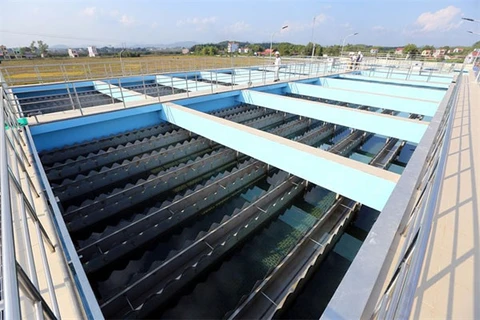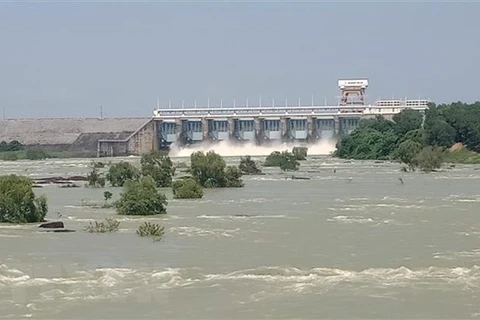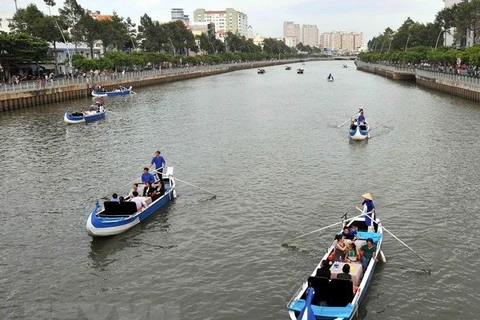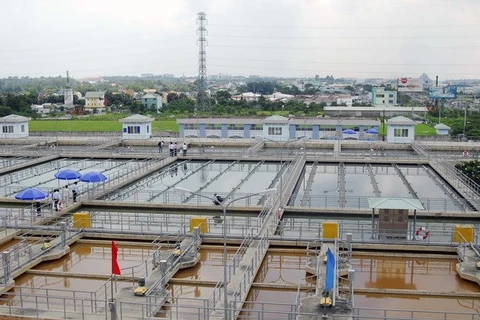 An overview of Dong Nai River basin. Experts said concerted efforts were needed by HCM City and the 10 provinces in the Dong Nai River basin to improve management of water resources and protect the environment. (Photo: vietnamworldmapz.com)
An overview of Dong Nai River basin. Experts said concerted efforts were needed by HCM City and the 10 provinces in the Dong Nai River basin to improve management of water resources and protect the environment. (Photo: vietnamworldmapz.com) Dr Phung Chi Sy, vice chairman of the Vietnam Association for the Protection of Nature and Environment, said it is vital to develop an environmental protection plan for the entire basin.
“The plan must clearly identify the pollution sources and degradation sources and make forecasts for until 2030.”
It is vital to assess the pollutant levels in each river, and strictly regulate waste discharge into it from industrial and residential areas.
“Any act of environmental pollution must be severely penalised.”
Deputy Minister of Natural Resources and Environment Vo Tuan Nhan added, “We need to draft a law on national environmental protection and bio-diversity conservation as part of the effort.”
Experts have urged HCM City and provinces in the basin to collect and treat wastewater before releasing it into the river.
They must also develop measures to control illegal sand mining and deforestation and protect the river’s eco-system, they said.
The localities have in recent years undertaken a number of measures to protect the basin, including installing a system to monitor the water environment.
In Binh Phuoc province, to protect the Be River’s environment, the Bu Dop Forest Protection Bureau plans to restore the flora and fauna of an area of 500ha while protecting existing forests.
Birds and animals are expected to improve bio-diversity, enabling the province to develop eco-tourism.
Dong Nai province has worked with neighbouring provinces and cities and central agencies to implement many drastic measures.
It has 31 industrial zones (IZs) and dozens of industrial clusters with thousands of businesses there discharging more than 127,000cu.m of wastewater into the river daily.
Earlier this year the Government approved a plan to move the Bien Hoa Industrial Park 1 from the river basin.
In HCM City, all 21 seriously polluting establishments have improved pollution treatment while others have been relocated or shut, according to city authorities.
The city has also completed the zoning of water based on water quality indicators (WQI) to assess the use of water from rivers and canals.
It has collected data on pollution caused by industrial effluents in the districts of Binh Thanh, Go Vap, Cu Chi, Hoc Mon, Nha Be, 4, 7, 9, 12 to assess the impact of industrial activities in the basin.
It has conducted a survey to identify those guilty of discharging wastewater directly into canals and ditches and calculate their level of pollution.
It has also created GIS maps to monitor and manage those guilty of discharging effluents.
To ensure they can supply clean water to the city, authorities recently decided to gradually draw from further upstream in the Sai Gon and Dong Nai rivers.
Worsening pollution
Experts said pollution in the Dong Nai River basin, which supplies water to around 17 million people in HCM City and nearby provinces, would continue to affect water supply since it is polluted by untreated wastewater from millions of households and thousands of factories.
Hydropower generation, irrigation and other activities also contribute to the pollution.
Le Viet Hung, director of the Dong Nai provincial Department of Natural Resources and Environment, said that in the basin pollutants, including organic substances, iron and bacteria in the water exceed permissible levels.
The Dong Nai River in particular, but also many other rivers in the country, has been over-exploited for hydropower.
Water in the downstream areas of the Sai Gon River suffers from severe micro-biological pollution and slight oil contamination.
Pollution indicators like ammonia, micro-organisms and manganese have all increased above levels permitted by Vietnam and the World Health Organisation.
The Dong Nai basin, one of the country’s largest, is drained by four main rivers, Dong Nai, Sai Gon, Thi Vai, and Vam Co.
Besides HCM City and Dong Nai province, the basin also comprises Dak Nong, Dak Lak, Lam Dong, Ninh Thuan, Binh Thuan, Binh Phuoc, Binh Duong, Ba Ria-Vung Tau, Long An, and Tay Ninh provinces./.
VNA























